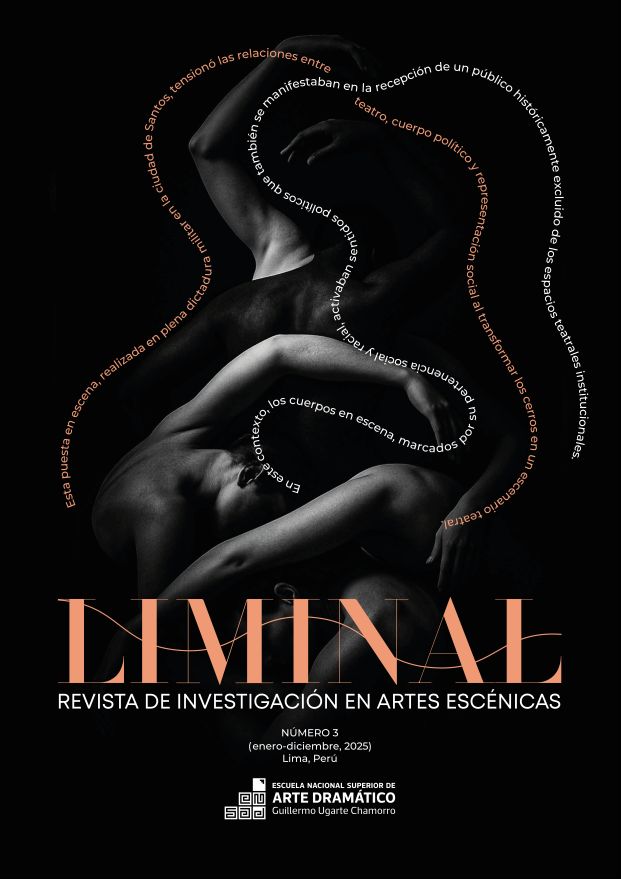Contradanza de Paucartambo
reflection and transgression of colonial power
DOI:
https://doi.org/10.69746/liminal.a54Keywords:
Contradanza, andean dances, Paucartambo, miscegenationAbstract
The contradanza is a European dance genre that was brought to our territory by the Spanish during the colony. In different Latin American countries, this dance was appropriated by local populations, generating new meanings and forms of expression. This text seeks to present the Contradanza of Paucartambo (Cusco - Peru) - which is one of the dances, of peasant origin, present in the Festival of the Virgen del Carmen - mainly through the description of its characters and choreography that alternates European and Andean rhythms and emerges, according to its own practitioners, as a mockery of the Spanish power of the colonial era. This mockery is represented, mainly, in the game between the Machu (Spanish) and the Maqt'a (indigenous), in which the reversal of roles is shown in the best style of king - jester or the tradition of the so-called trickster, present both in the mythology of different cultures and in theatrical tradition. Finally, based on the fact that currently the members of the troupe are perceived as privileged within society, a thought is presented on the complexity of this dance as a reflection of the process of miscegenation in Peru.
Downloads
References
Asociación folklórica cultural Contradanza de Paucartambo (2015) Contradanza de Paucartambo, Cusco: Asociación folklórica cultural Contradanza de Paucartambo.
Authier, M. d. (2009). Fiesta andina: Mamacha Carmen en Paucartambo. Lima: San Marcos.
Bautista, R. (2018). El Circuncaribe como constructor de géneros musicales: su majestad el danzón. Revista Interdisciplinaria de Estudios Latinoamericanos, (1), 61-70.
Benza, S., Mennelli, Y. P. (2015). En busca del "nacionalismo auténtico". Institucionalización de repertorios de danzas folclóricas en Argentina, Bolivia y Perú a mediados del siglo XX. Cuadernos de la Facultad de Humanidades y Ciencias Sociales, n. 47, 135-155.
Boluarte, A. (2022). Entrevista personal, 30 de agosto.
Cánepa, G. (1998). Máscara, transformación e identidad en los Andes: la fiesta de la Virgen del Carmen. Lima: Pontificia Universidad Católica del Perú.
Félix, C. (2023). Comunicación personal, 15 de febrero.
Huerta-Mercado, A. (2019). Risa de altura: personajes lúdicos en la fiesta andina. En Banco de Crédito del Perú, Fiestas y Danzas del Perú. Lima, BCP.
Huerta-Mercado, A. (2022). Feliz seré: chisme humor y lágrimas en la cultura popular. Lima: Pontificia Universidad Católica del Perú, Fondo Editorial.
Jimenez Borja, A. (1941). Taquies según Guaman Poma. Lima: Cuadernos de Cocodrilo.
Londoño, A. (1981). Danzas colombianas de proyección folclórica. Educación física y Deporte, 3(2), 64-69.
Prentki, T. (2012). The fool in european theatre: stages of folly. London: Palgrave Macmillan.
Radin, P., Kerényi, Karl, y Jung, C. G. (1973) The Trickster: A Study in American Indian Mythology. New York: Schocken Books.
Rubio, M. (2022). El gran teatro de Paucartambo. Lima: Grupo Cultural Yuyachkani.
Vásquez, C. (2013) CONTRADANZA, Paucartambo, Cusco. 1991 [video].https://www.youtube.com/watch?v=zzmg_nl6HCY. (consulta: 14-11-2023)
Downloads
Published
How to Cite
Issue
Section
License
Copyright (c) 2025 Rodrigo Benza Guerra

This work is licensed under a Creative Commons Attribution 4.0 International License.













